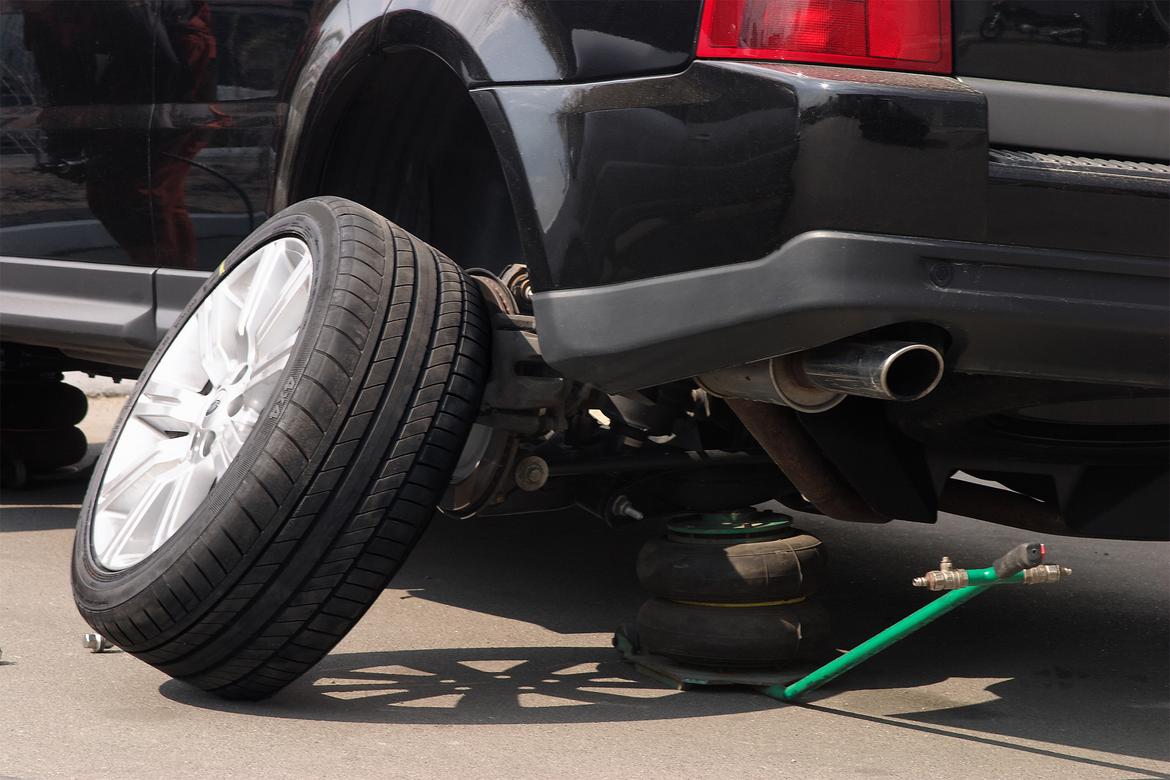You can safely replace only one tire if the others still have most of their tread.
Unlike the old days, when a pair of "snow tires" would be mounted to the drive wheels only for winter use, today we recognize that a vehicle should have four matching tires: same type, same model and, yes, even same degree of wear. The reason is simple: A car with four tires that behave the same — whether accelerating, braking or cornering — is balanced and predictable. If any of these factors are different at one or more wheels, traction characteristics can vary and performance will be unbalanced.
Tread depth is measured in 32nds of an inch, and most new tires typically have 10/32 to 12/32 (5/16 to 3/8) of an inch of tread. If a car's other tires have lost only 2/32 or up to maybe 4/32 of their original tread depth, it's probably OK to replace just the damaged tire.
There can be exceptions, though. Some manufacturers of all-wheel-drive vehicles recommend that all four tires be replaced, not just one or two, because a new tire will have a larger overall diameter than the other tires. The ones that have lost just a few 32nds of tread depth will spin faster than the new one, and the difference could cause an all-wheel-drive system to engage on dry pavement and possibly damage the system.
On an all-wheel-drive vehicle or one with a conventional four-wheel-drive system, all four tires would ideally be replaced at the same time so they all have the same amount of traction as well as the same diameter.
On a front- or rear-wheel-drive vehicle, similar guidelines apply. If half or more of the tread on all four tires is gone, replacing just one tire will result in one wheel spinning at a slower rate than the others, possibly sending false signals to the traction control and antilock braking systems. It also will result in one tire having more or less raction for acceleration, braking and cornering grip than the others, which can affect a vehicle's behavior. On a two-wheel-drive vehicle, a better approach would be to replace both tires on the same axle. The best approach, though, is to replace all four if the tread on the old tires is significantly worn.
One way to avoid buying more than one tire is to have the tread on the new one "shaved" so it matches the depth of the others. Some tire dealers will shave off some tread depth on a special machine for a fee.
If you decide to replace only one tire, it should be the same model, size and tread pattern as the others. A different brand or model tire will have even greater differences in traction and number of revolutions per mile, and it's likely to wear at a different rate. That means it could conceivably wear out faster than the others, even if it starts out with more tread depth.
Whether you decide to replace just one tire or more, tire experts advise that the new rubber should be mounted on the rear. If new tires are mounted on the front, the worn tires in the rear would be more susceptible to hydroplaning — riding on top of water on the road — and possibly causing the vehicle to spin in a turn.

